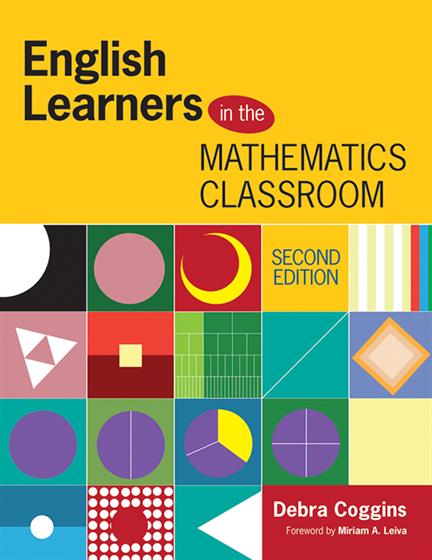Preface
Foreword by Miriam A. Leiva
Introduction
1. Developing Conversational Language: Help English Learners
Talk-to-Learn During Mathematics Lessons
Rationale From Research
Mathematics Teaching Example: Sorting Shapes (Geometric Attributes)
Discussion of the Mathematics Teaching Example
Teaching Tips
Discussion of Conversational Language
Conversational Language Research
2. Developing Academic Language: Develop Mathematics Concepts and Vocabulary for English Learners
Rationale From Research
Mathematics Teaching Example: Number Riddles (Addition and Subtraction Word Problems)
Discussion of the Mathematics Teaching Example
Teaching Tips
Discussion of Academic Language Development
Academic Language Research
Discussion and Project Questions
3. Scaffolding: Give Support for Both Mathematics and Language Learning
Rationale From Research
Mathematics Teaching Example: Table Arrangement Problem
Discussion of the Mathematics Teaching Example
Teaching Tips
Discussion of Scaffolding in Mathematics
Scaffolding Research
Discussion and Project Questions
4. The Role of Concrete Materials: Utilize Objects to Develop Mathematical Understanding for English Learners
Rationale From Research
Mathematics Teaching Example: District Benchmark (Multiply By a Fraction)
Discussion of Mathematics Teaching Example
Teaching Tips
Discussion of Concrete Materials in Mathematics
Concrete Materials Research
Discussion and Project Questions
5. Visual Learning: Provide Mathematical and Organizational Representations As a Regular Component of Instruction
Rationale From Research
Mathematics Teaching Example: How Many Chairs? (Two-Digit Multiplication)
Discussion of Mathematics Teaching Example
Teaching Tips
Visual Learning Research
Discussion and Project Questions
6. Questioning Strategies: Ask Questions to Foster Students' Learning of Mathematics and English
Rationale From Research
Mathematics Teaching Example: Snail Races (Probability)
Discussion of Mathematics Teaching Example
Teaching Tips
Discussion of Questioning Strategies in Mathematics
Questioning in Mathematics Research
Discussion and Project Questions
7. Comprehensible Input: Combine Many Strategies to Develop Mathematics Concepts Through Clear and Effective Instruction
Rationale From Research
Mathematics Teaching Example: Similar Shapes, Multiplicative Scaling, and Proportion
Discussion of Mathematics Teaching Example
Teaching Tips
Discussion of Comprehensible Input in Mathematics
Comprehensible Input Research
Discussion and Project Questions
Appendix
A 1.1 Geometric Shapes
A 3.1 Blank Planning Map
A 3.2 Sample Planning Map
A 6.1 Gameboard for Snail Races
A 6.2 Questions List
References



